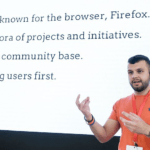Projects are launched with the full conviction that a new product will make the world a better place for someone and generate profits.
Business requirements describe the main benefits that the new system will bring to its customers, buyers and users. Business requirements directly affect which custom requirements are implemented. And in what sequence.

Initial data
They summarize the rationale and content of a new product. Or they summarise changes that need to be made to an existing product.
A general description of the product requirements document is placed here. It’s a result of which a decision was made to create a product.
Business Opportunity
For a corporate information system, they describe the business problem. It is solved through this product, or business processes for which a product is required to improve. As well as the environment in which the system will be used.
For a commercial product, describe the existing market opportunities and the market in which the product will have to compete with other products. This section may contain a comparative assessment of existing products and possible solutions. It indicates what is the attractiveness of the product and its benefits.
Describe the problems that cannot be solved without the proposed solution. Show how it fits with market trends, technology developments, or corporate strategy. Briefly describe other technologies, processes, or resources needed to satisfy the customer.
Describe the needs of your typical customers or target market. Imagine the client’s tasks that the new product will solve. Provide examples of how customers will use the product. List any known critical quality or interface requirements, but do not mention implementation and design specifics.
With a set of business goals in place, ask the question, “What is stopping us from reaching this milestone?” To define a more detailed business goal. Or, you can go back by asking, “Why is this landmark important to us at all?” To better understand a business challenge or top-level opportunity.
When you have a business problem, ask yourself, “How can you tell if the problem has been solved?” To define a measurable goal. The process is performed iteratively by moving through the hierarchy of tasks and goals until you get a list of functions that will allow you to solve tasks to achieve the goals.
Success criteria
Determine how stakeholders will define and measure project success. Identify the factors that most affect the success of the project. Those that the organization can control. And those that are outside of its sphere of influence.
Concept Statement
Make a concise statement of the concept of the project, summarizing the long-term goals and purpose of the new product. This document should reflect a balanced concept that satisfies the various stakeholders.
It may be somewhat idealistic. But should be based on existing or perceived market factors, enterprise architecture, corporate strategic direction, or resource constraints.
Product concept development
You can ask several stakeholders to write their position separately, rather than in a group. Comparing these vision statements will be a good way to spot differences in the understanding of the project’s objectives. Moreover, it is never too late to write a provision on the concept.
Even if the project is already in progress, developing the concept statement will ensure that the remainder of the project is on the right track. A vision statement is created quickly. But it will take longer to get the statement right and agree with all stakeholders.
Business risks
Summarizes the critical business risks associated with developing – or not developing – this product. Risks include market competition, timing, acceptability to users, implementation issues. And also there are potential negative factors affecting the business. Business risks differ from project risks.
They are usually associated with resource availability and technology specifics. Assess the possible losses from each risk factor, the likelihood of its occurrence, your ability to control it. And it also identifies all possible actions to mitigate the situation.
Join 25,000+ smart readers—don’t miss out!






